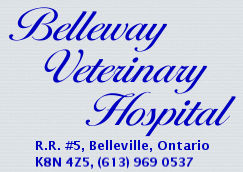|
Anesthesia and patient monitoring varies greatly among clinics. When you choose your veterinarian, be sure to question the types of anesthetics used and the protocols for monitoring anesthesia.
Often the more expensive anesthetics are safer to use; however, anesthetics are also chosen for other reasons including their ability to control pain.
Local Anesthesia
A local anesthetic causes a loss of sensation to a ‘local' area. Small surgical or diagnostic procedures may require a local anesthetic to perform. A biopsy is a common diagnostic procedure where local anesthetic can be used to control pain. A biopsy involves surgical removal of a small portion of tissue.
Tranquilization/Sedation
Tranquilization or sedation is used to calm an animal under various conditions. The animal remains awake or may ‘sleep' but is easily aroused when stimulated. Pet owners frequently request sedation for their animals during travel, thunderstorms, fireworks, etc. Sedation and tranquilization are not without risk and each animal should be assessed prior to dispensing these medicines.
|
General Anesthesia
A general anesthetic results in a loss of consciousness in the animal and a loss of sensation throughout the body. Most general anesthetic procedures involve several steps beginning with the administration of a sedative. An intravenous injection of an anesthetic renders the animal unconscious while a breathing tube is placed into the animal's trachea. A gas anesthetic is delivered in combination with oxygen to the animal via the breathing tube to maintain the state of unconsciousness.
Although general anesthetics are significantly safer than they have been in the past, there is still the remote chance of an anesthetic accident. There are many ways to reduce the risk associated with anesthesia including a thorough physical examination and blood work prior to anesthesia. Anesthetic monitoring equipment and protocol can also contribute to a safer anesthesia.
Patient Monitoring
During general anesthesia, our patients are monitored closely by a registered animal health technician for heart rate, respiratory rate, capillary refill time and blood pressure. A change in blood pressure is an early indicator that a pet may be running into trouble. Monitoring blood pressure allows us to intervene earlier and prevent any anesthetic risk to your pet. We chart your pet's statistics every 10 minutes from the moment he or she is anesthetized to the time when he or she wakes up. Please feel free to request a copy of your pet's anesthetic chart.
Pain Management and Control
We know the issue of pain management is of great concern to pet owners today. As in human medicine, we have a variety of medications available to manage your pet's pain both before and after surgery and in the event of trauma. We would be pleased to discuss the options available to you and your pet under any of the above circumstances.
|


